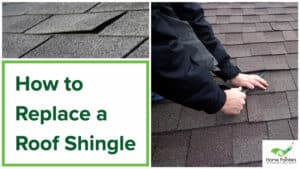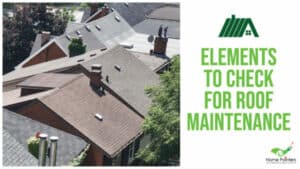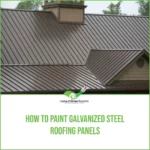
A leaking roof can turn from a minor nuisance to a major catastrophe in no time. Whether it’s a small damp spot or a full-blown waterfall in your living room, knowing how to address a leak quickly and effectively is crucial for protecting your home and family from the elements. In this comprehensive guide, we will walk you through everything you need to know about identifying, and assessing leaks and will get you to the process of how to fix leaking roofs safely.
Signs of a Leaking Roof
The first step to addressing any roofing issue is recognizing when repair is necessary. There are several signs that indicate you have a leak:
- Water leaking from ceiling
- Visible damage to the roof, such as missing shingles or damage to the flashing
- Evidence of water in your attic
- Peeling paint or wallpaper
- Mould or other signs of moisture damage
If you notice any of these signs, it’s important to act quickly. A small leak can quickly turn into a large problem, leading to mould, mildew, and significant damage to your home’s structure.
The Anatomy of a Leaking Roof
Understanding how your roof is constructed can help you pinpoint the source of a leak. Common problem areas include:
- Flashing around chimneys and skylights
- Valleys where two roof planes meet
- Roof vents and pipes
- Damaged or deteriorating shingles
- Ice dams in colder climates
The Dangers of Delaying Roof Repair
It can be tempting to put off a roof repair, especially if the leak seems small. However, delaying can lead to costly damage and even health hazards:
Water Damage and Its Consequences
- Weakened roof structure
- Compromised insulation
- Damaged ceilings and electrical systems
- Increased risk of fires due to water contacting electrical parts
The Health Risks of a Leaky Roof
Mould and mildew can flourish in the damp environment created by a leak. Exposure to these substances can lead to:
- Respiratory issues
- Allergies
- Skin irritation
- Compromised immune systems
Financial Implications and Insurance Considerations
Postponing roof repairs can make you ineligible for insurance coverage, leaving you with the full roof leak repair cost. Additionally, most insurance policies expect homeowners to take reasonable steps to prevent and mitigate damage.
Navigating Your Roof Repair Options
It can be tempting to put off a roof repair, especially if the leak seems small. However, delaying can lead to costly damage and even health hazards:
Assessing Roofing Material Durability
- Asphalt shingles: the most common, with a lifespan of 15-30 years
- Metal roofing: durable and long-lasting, with a higher upfront cost
- Slate or tile: aesthetically pleasing but requires professional installation and repair
- Wood shakes: natural and attractive, but prone to rot and insect damage
DIY Roof Repair Kits and Materials
DIY kits can be cost-effective for small repairs but may not be as high quality as professional-grade materials. Things to consider include:
- Patching materials for asphalt or wood shingles
- Sealants for flashing and vents
- Tarpaulins for temporary coverings
Professional Roofing Services
For complex leaks or significant damage, it’s best to call a professional. Roofing contractors can provide:
- Thorough inspections
- Expert repairs using high-quality materials
- Warranties on workmanship and materials
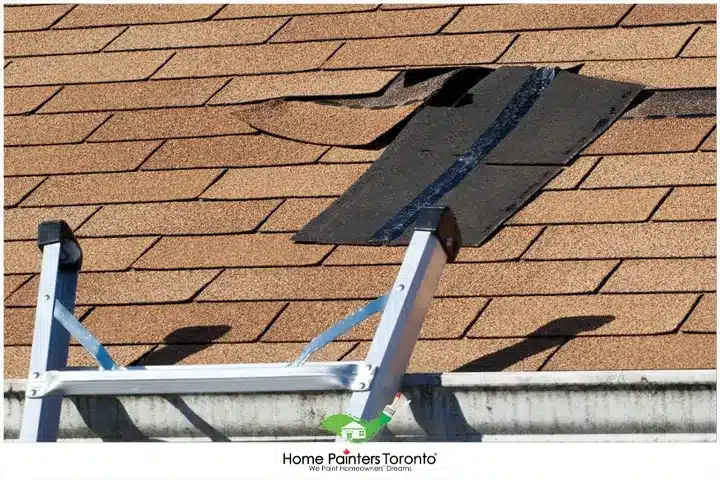
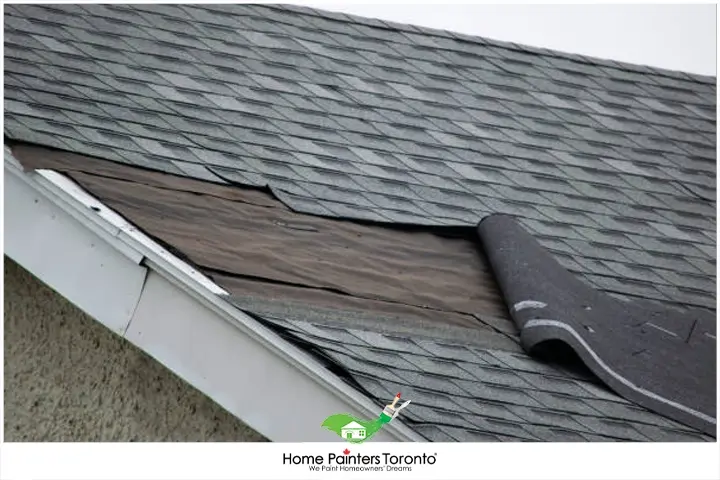
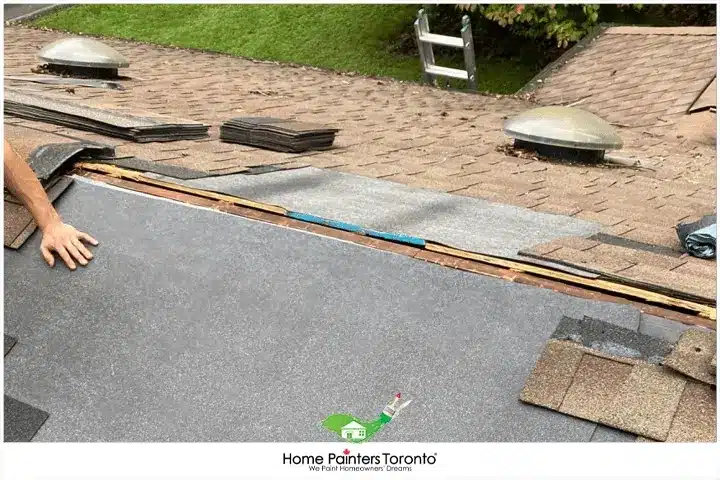
Temporary Fixes That Can Help You Stay Dry
In an immediate crisis, you may need to perform a quick fix for a roof leak to prevent further water intrusion. Here are some short-term solutions:
Tarping a Roof
When you need to stem the flow of water quickly, a sturdy tarp can be a lifesaver. Here’s how:
- Measure the area that needs to be covered and add several feet for overhang.
- Nail or staple the tarp to the roof, working from the highest point down.
- Use bricks or other weights to hold down the edges.
Using Sealants
Sealants can be a useful tool to cover small cracks or holes temporarily. Make sure to:
- Clean the area thoroughly before applying the sealant.
- Follow the manufacturer’s instructions carefully, including proper temperature and application methods.
- Recognize that sealants are not a permanent solution and plan for further repairs.
Safe DIY Roof Leak Repair Practices
If you’re confident in your DIY skills, you can address some roof repairs on your own. Safety is paramount when working on a roof, so make sure to:
Assess the Risk and Prepare
- Have a spotter on the ground to assist, and call for help if needed.
- Use a sturdy ladder, and have someone hold it while you ascend.
- Work in good weather conditions and wear appropriate safety gear, including shoes with good traction.
Repair Roof Shingles
- Carefully remove the damaged shingle, being mindful not to damage adjacent ones.
- Slide a new shingle into place, securing it with roofing nails.
- Apply roofing cement to the edges for extra protection.
Fix Flashing and Vents
- Remove the old flashing and inspect the area for damage.
- Cut new flashing to size and secure it with roofing nails.
- Use roofing sealant to cover the nails and create a water-tight seal.
Making Safe Roof Repairs After Flooding and Heavy Snow Melt
Flooding and heavy snow melt can lead to roof damage and leaks. Here’s how to make safe repairs after such events:
Wait for Safe Conditions
Never attempt to repair a roof when conditions are unsafe. Wait until the area is dry and stable to avoid injury.
Inspect for Structural Damage
After flooding or heavy snow, inspect your roof for any signs of structural damage. Look for sagging areas, large cracks, or shifted materials.
Address Interior Water Damage
If there is interior water damage, address it before making any repairs to the roof. This may involve removing damaged materials and allowing the area to dry completely.
Make Temporary Repairs
In some cases, you may need to make temporary repairs to stop the leak until a professional can assess and repair the damage.
When To Call The Roof Repair Professionals
Not all leaks can or should be fixed by the homeowner. Here are scenarios in which it’s best to pick up the phone to call the roof leak repair experts:
Severe or Widespread Damage
- If the leak is severe or has caused significant damage, a professional can help you assess the situation and provide a complete solution.
Safety Concerns
- If the repair requires walking on steep or high sections, leave it to someone with the training and equipment to do so safely.
Insurance and Warranty Considerations
- Having a professional handle the repair can ensure the work is done to a standard that will satisfy your insurance company or uphold warranty terms.
Maintaining Your Roof to Prevent Future Leaks
An ounce of prevention is worth a pound of cure, especially when it comes to your roof. Regular maintenance can help you avoid leaks altogether:
An Ounce of Prevention: Routine Checks
- Inspect your roof at least twice a year, looking for missing shingles, rusty flashing, or other signs of damage.
- Keep your gutters clean and make sure they’re not sagging or damaged.
- Trim back overhanging branches to prevent damage and avoid providing a route for pests or animals to access your roof.
Professional Roof Inspections
Hire a professional to inspect your roof every three to five years. They can identify issues you might miss and perform preventative maintenance.
Weatherproofing and Longevity
Consider adding weatherproofing materials when doing any repairs or having your roof resealed. These can help extend its life and protect against severe weather.
BOTTOMLINE
A leaking roof is more than just an inconvenience; it’s a sign that your home’s first line of defence is compromised. By understanding how to identify, prevent, and repair a leaking roof, you can save yourself a substantial headache and maintain the integrity of your home. Whether you’re faced with repairing water-damaged ceilings, tackling springtime exterior face-lifts, or managing the after-effects of severe weather, the ultimate guide to roof repair will equip you with the knowledge to keep your home safe and sound. Remember, safety comes first, and when in doubt, it’s always best to consult with a professional. With these insights and practices at your disposal, you are well on your way to becoming a savvy and proactive homeowner.
More Interesting Blogs Related to
“The Ultimate Guide to Roof Repair: Safe and Effective Ways to Fix a Leaking Roof”
Your home’s defence against the unpredictable Toronto weather begins with a roof that’s not just repaired but restored to its utmost efficiency and reliability. Whether you’re facing immediate leaks, dealing with wear and tear, or proactively seeking to avoid future issues, the time to act is now.
Contact us today to schedule a detailed roof assessment. Let’s discuss how we can extend the life of your roof with solutions that are both efficient and economically sound. Call us today at 416.494.9095 or email [email protected] for a FREE quote. Our team is ready to answer your questions, provide a thorough consultation, and guide you through every phase of your roof repair. And don’t forget to follow us on all our social channels below!


